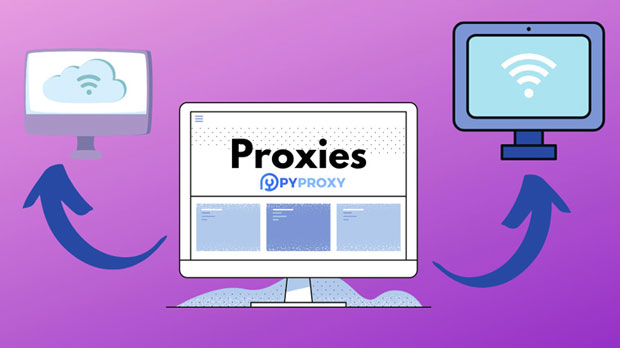When you use a socks5 proxy, it can significantly impact your internet browsing speed, including video streaming. While sock s5 proxies provide anonymity and bypass geo-restrictions, they can also lead to slow video loading due to factors like increased latency, bandwidth limitations, and server congestion. This article will explore the reasons behind the slow video loading and provide practical solutions to address this issue, enabling users to improve their streaming experience while using SOCKS5 proxies. Introduction to SOCKS5 Proxy and Video Loading ChallengesSOCKS5 proxies have become a popular choice for users who want to protect their online privacy and access content restricted by region. Unlike traditional HTTP proxies, SOCKS5 proxies can handle any type of traffic, making them ideal for streaming video. However, the increased routing and encryption layers introduced by SOCKS5 can cause slowdowns in video loading times. These delays are primarily attributed to network congestion, geographical distance between the proxy server and the user, and the limitations of the proxy server’s bandwidth.Factors Affecting Video Streaming Speed with SOCKS5 Proxy1. Increased LatencyLatency refers to the time it takes for data to travel between your device and the server. When using a SOCKS5 proxy, your internet traffic is routed through an intermediary server, which adds extra hops to the data transfer process. This increased routing time results in higher latency, which can cause noticeable delays in video loading. The further the proxy server is from your location, the higher the latency will be, leading to slower buffering times and interruptions during playback.2. Bandwidth LimitationsBandwidth is the maximum rate at which data can be transferred over the internet. SOCKS5 proxies often have bandwidth limitations, especially if the proxy server is shared among multiple users. As a result, during periods of high demand, the available bandwidth may be insufficient to stream high-quality videos smoothly. This congestion can lead to buffering, low-resolution playback, or even failure to load the video at all.3. Proxy Server OverloadProxy servers, particularly free ones, can become overloaded due to high usage. If multiple users are connecting to the same server, the overall server performance can degrade, resulting in slower speeds. This is particularly problematic for video streaming, as videos require a consistent and stable connection to load properly. When a proxy server becomes overloaded, it can significantly impact your ability to stream videos without interruptions.4. Geographical Location of Proxy ServerThe geographical location of the socks5 proxy server plays a crucial role in determining the speed of your video streaming experience. If the proxy server is located far away from your actual location, the data packets will take longer to reach their destination, leading to slower loading times. Additionally, some regions may have slower internet connections or less robust infrastructure, further exacerbating the issue.Solutions to Improve Video Streaming Speed with SOCKS5 Proxy1. Choose a Proxy Server Close to Your LocationTo reduce latency and improve video streaming performance, it’s essential to choose a SOCKS5 proxy server that is geographically closer to your location. By minimizing the distance between the proxy server and your device, you can reduce the time it takes for data to travel, leading to faster loading times. Many premium proxy providers offer multiple server locations, allowing users to select the one that offers the best performance.2. Opt for a Premium SOCKS5 Proxy ServiceWhile free SOCKS5 proxies may be appealing, they often come with limitations such as lower bandwidth, slower speeds, and higher server load. Upgrading to a premium SOCKS5 proxy service can significantly improve video streaming performance. Premium services typically offer faster speeds, better bandwidth allocation, and more reliable servers. Additionally, they are less likely to be overcrowded, ensuring a smoother streaming experience.3. Test Proxy Server SpeedBefore committing to a SOCKS5 proxy server, it’s a good idea to test the server’s speed. Many proxy services provide speed test tools that allow you to check the latency and bandwidth of a server before you connect to it. By testing different servers, you can identify the one that offers the best performance for video streaming. This step is especially important if you’re using a proxy for streaming content, as speed can vary significantly between different servers.4. Use a Proxy with Higher BandwidthTo prevent buffering and slow video loading, ensure that the SOCKS5 proxy you are using has sufficient bandwidth to handle video streaming. Some proxies, especially free ones, may impose bandwidth caps that restrict the amount of data you can transfer. Opting for a SOCKS5 proxy that offers unlimited or higher bandwidth will ensure that you can stream videos without interruptions. If video quality is important to you, it’s essential to select a proxy with enough bandwidth to support HD or 4K video playback.5. Switch to a Different ProtocolIf you find that SOCKS5 proxies consistently cause slow video loading, you may want to consider switching to a different protocol, such as HTTP or VPN (Virtual Private Network). While SOCKS5 offers certain advantages like flexibility and speed for non-streaming activities, other protocols like VPNs may offer more stable and reliable connections for streaming purposes. VPNs, in particular, provide better encryption and are designed to handle video traffic more efficiently.6. Clear Cache and Optimize Your DeviceSometimes, slow video loading may not be entirely related to the proxy server itself. Over time, cached data can accumulate in your browser or streaming app, affecting performance. Clearing your cache and optimizing your device can help improve video streaming speeds. Ensure that your device is running the latest software updates, and close any unnecessary background applications that may be consuming bandwidth.7. Avoid Peak HoursJust like with internet traffic, proxy servers can become congested during peak hours when many users are online. To avoid slow video loading, try using the proxy during off-peak hours when fewer users are connected. If your proxy service offers automatic server switching, enable this feature to ensure that you are always connected to the fastest server available.ConclusionWhile using a SOCKS5 proxy can improve privacy and enable access to geo-restricted content, it can also lead to slower video streaming speeds due to factors like increased latency, bandwidth limitations, and server overload. By choosing a proxy server closer to your location, opting for premium services, and performing regular speed tests, you can significantly improve your video streaming experience. Additionally, optimizing your device and avoiding peak hours can help mitigate the effects of slow video loading. With the right approach, you can enjoy smooth and uninterrupted video streaming even while using a SOCKS5 proxy.
Jul 17, 2025


































































